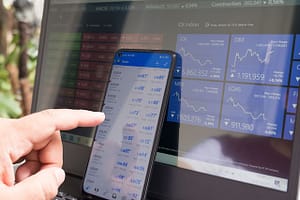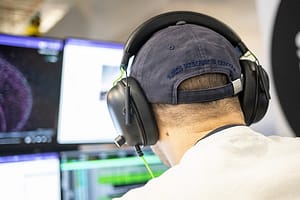You have understood various aspects of the Forex market such as what makes it up, what is traded, and the factors that affect it. Now, you can move to the next step of learning when to trade.
Although the market is open 24/7, this doesn’t mean that a trader can get in at any time and buy and sell currencies. There are specific trading hours when activity is high on the market. By the end of this 5-minute read you will get to know what FX trading sessions are, and an even deeper understanding of the London session.
Forex trading sessions
With an active Forex trading account, you can make money when the currency markets goes up or down. Successful traders first learn what the best times to trade are. This means getting into the details of the different trading sessions that make up the global Forex market.
Currently, the Forex market is divided into four major sessions. These are:
- The Sydney Session
- The Tokyo/Asian Session
- The London Session
- The New York Session
The London session accounts for most of the trading activity on the global Forex market. According to a 2018 report by IFS London, this session, also called the European session, accounts for 34% of global currency trading. London is historically the financial center of Europe and evidently the central trading capital of the world. Most Forex trends start during the London session (more on this shortly).
Top 6 things to know about the London trading session
1. Opening and closing hours
The trading hours for the European session fall more or less within official business hours in London. The session runs between 07:00 – 16:00 GMT.
2. Most volatile Forex trading session
Since the largest amount of transactions take place during the London trading session, it is the most volatile of all sessions. Short-term traders who only hold positions for hours find this characteristic of the market vital for their trading. Toward the end of the session, volatility dies down as traders break for lunch before waiting for the start of the New York session.
3. Overlaps with other sessions
The London session crosses with the Tokyo and the New York sessions at different times. Take keen note of these overlaps as liquidity is higher and there are great opportunities for profitable trading because of smaller pip spreads and lower transaction costs.
During the summer (March/April – October/November) the London and Tokyo sessions overlap between 3.00 and 4.00 AM ET. The overlap between the London and New York sessions overlap during both summer and winter from 8.00 AM and 12.00 PM ET.
Usually, the overlaps are the busiest times as both markets are open at the same time and there are more volumes being traded. Currency pairs that are vigorously traded during the Tokyo and London sessions dominate London session are presented by currency pairs that are vigorously traded during the Asian/European session, while those observed during the New York/ during the individual New York and London markets.
4. The majority of trends originate from London
Most trends begin during the European session and continue until the New York session kicks off. However, it’s noteworthy that sometimes the trends tend to reverse at the end of this session as European traders might decide to lock in profits.
5. Best currency pairs to trade during the London session
Major currency pairs include the GBP/USD, EUR/USD, USD/JPY, and USD/CHF. These normally have the tightest spread and the highest potential profits. The EUR/JPY and GBP/JPY Yen crosses also experience a great deal of volatility, though the spreads are normally wider than that of major currency pairs.

6. RISKY Market hours: When NOT TO TRADE during the London session
Liquidity is the most important indicator of when to and when not to trade. During periods of low liquidity, which is usually when the market opens (about 12 AM local time), volatile and that is why trading experts don’t recommend opening positions there is considerable trading risk. Low liquidity can make the market more of loss. It has been observed that spreads tend to widen around 12 am. between 12.00 and 2 AM because they can put your Forex trading account at risk
It is clear that in the Forex market not all hours are equally good for trading. The best time to trade is when more than one of the four major markets is open. Overlaps between the London session and either the New York session or the Asian session represent periods of heightened trading activity. Clearly, targeting your trades during these sessions can enable you get the most from your trading account.






Leave a Comment